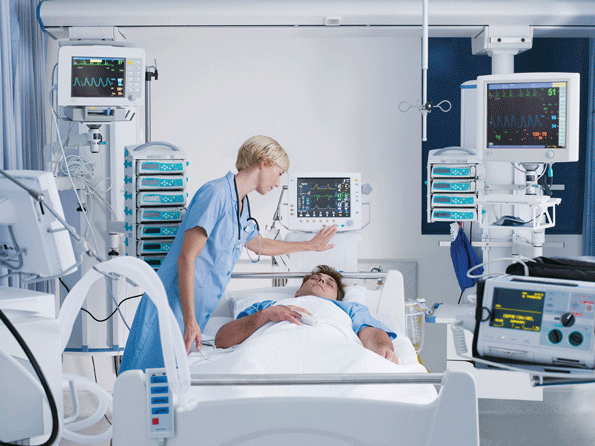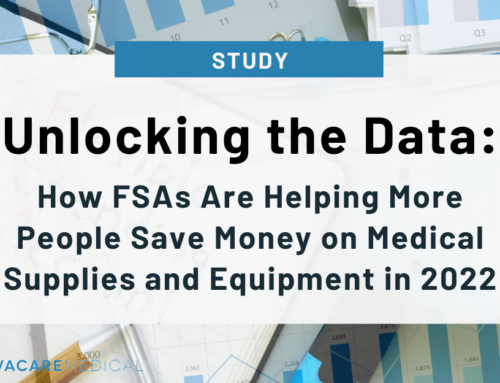On-Site and Custom Procedure Trays, Cloud Computing, and Your Healthcare Institution: Utilizing Modern Medical Equipment
Diverse Coverage
If you run a healthcare facility of any kind, you’re likely to encounter varying needs among varying clients. If you want to have the ability to properly provide for them, you’ll want to have the right medical equipment. There are a few different schools of thought on this. One way to ensure you’ve got all you need is to figure out which kind of patients will most regularly be involved with your clinic.
Does your healthcare facility provide specific services, emergency services, walk-in services, or is it some sort of general clinic operating around the clock? What kind of insurance organizations do you work with? What kind of government assistance do you end up facilitating in terms of medicine?
According to Health Markets, “Medicare coverage is broken into specific parts: Medicare parts A, B, C, and D. Each part provides its own unique coverage, and depending on which part you choose, the enrollment options will also vary.” Differing parts of Medicare may very well predicate different levels of service, and so different necessary equipment.
Some healthcare facilities vie for custom-made procedural trays that are designed and shipped in advance. Especially for clinics that operate specifically with one kind of patient or another, this can be ideal. However, there are other clinics who swear by on-site sterilization in order to conserve resources.
Diverse Schools Of Thought
While it makes sense to have on-site sterilization solutions immediately available at all times, it also makes sense to have prepackaged trays full of equipment for specific operations. One compromise between shipping in such trays and re-using on-site equipment is to have those working at a given facility design procedural trays and store them. But this will take those individuals away from other profitable and necessary work.
Wherever you source your medical supplies from, you want to ensure said provider is continuously up-to-date. Technology innovations today are exceptionally diverse. From Internet of Things (IoT) applications to cloud computing to mobile technology and everything in-between, there are a lot of tech resources you can use to properly supply your company. What is medical equipment now, and what was medical equipment in the past, is something that has changed. A digital tablet may keep tabs on multiple patients, and is technically a piece of medical equipment even if it has multiple uses.
New equipment of this kind can actually save lives. But alternatively, you can lose patients if you apply a technology solution that has yet to be fully proven in the marketplace. Additionally, you’ve got regulations to consider. HIPAA is no joke, and you can be fined hundreds of thousands of dollars for easily-preventable security breaches. Especially considering the vulnerabilities mobile tech brings to the table, such new equipment requires a comprehensive management perspective that considers all the angles. Today’s medical equipment isn’t simply static.
In today’s medical environment, it’s definitely considerable that acquiring the right medical equipment could predicate working with a technology solution previously unfamiliar to your facility. Ideally, you’ll save time in operations through the right tech solution. Expediting recovery facilitation is paramount to medicine—should it be possible in a safe, healthy manner. The right tech infrastructure facilitates as much in a number of ways. In fact, it is partially due to technology that customized, prepackaged procedural trays are a thing to begin with. So even if you haven’t made the IoT switch yet, you’re already likely benefiting from the fruits of such innovation as it has trickled down to your facility.
The Whole Picture
With an online cloud-based categorization system, not only can patients be monitored in real time, but information can be updated directly as well, and categorized in a way which doesn’t require an entire floor that’s devoted to the files of those with whom you work. More space is opened up, allowing you to increase your level of service provision. Additionally, you can keep better track of the equipment you have, helping you maximize your investments and remain contemporary as new options develop.
Acquiring the right tools for the job is one of the most fundamental needs of your healthcare business. You’ll have device and tool acquisition needs that concern operations, that pertain to post-op care, and that pertain to technological infrastructure. Or to put it another way, medical equipment isn’t just forceps, stethoscopes, tongue depressors, gurneys, and EKG machines. Today, the tablet and the smartphone are equal players in the field, and ignoring this reality can be negatively impactful. The right medical provider should have solutions in all these necessary areas.
Look at all expenditures as investments. If you invest well, you’ll see a return on your investment. Invest in the right medical supplies and you’ll make your practice more effective. The more effective your practice is, the more effective it can be–and the more lives can be saved. When it comes to procedural trays and new digital medical equipment, like tablets, cloud categorization, and even smartphones, you’re going to have to complete some cost-benefit analyses which compares and contrasts such options.
Should you use trays prepared on-site, or those pre-packaged beforehand? Should you employ tablets and smartphones on the floor as guided by the cloud, or is that a “bridge too far”? Today’s medical equipment is much different from that of yesteryear; you’ll need to plan accordingly.
Ashley is a super-connector who helps businesses find their audience online through outreach, partnerships, and networking. She frequently writes about the latest advancements in digital marketing and focuses her efforts on developing customized blogger outreach plans depending on the industry and competition.




